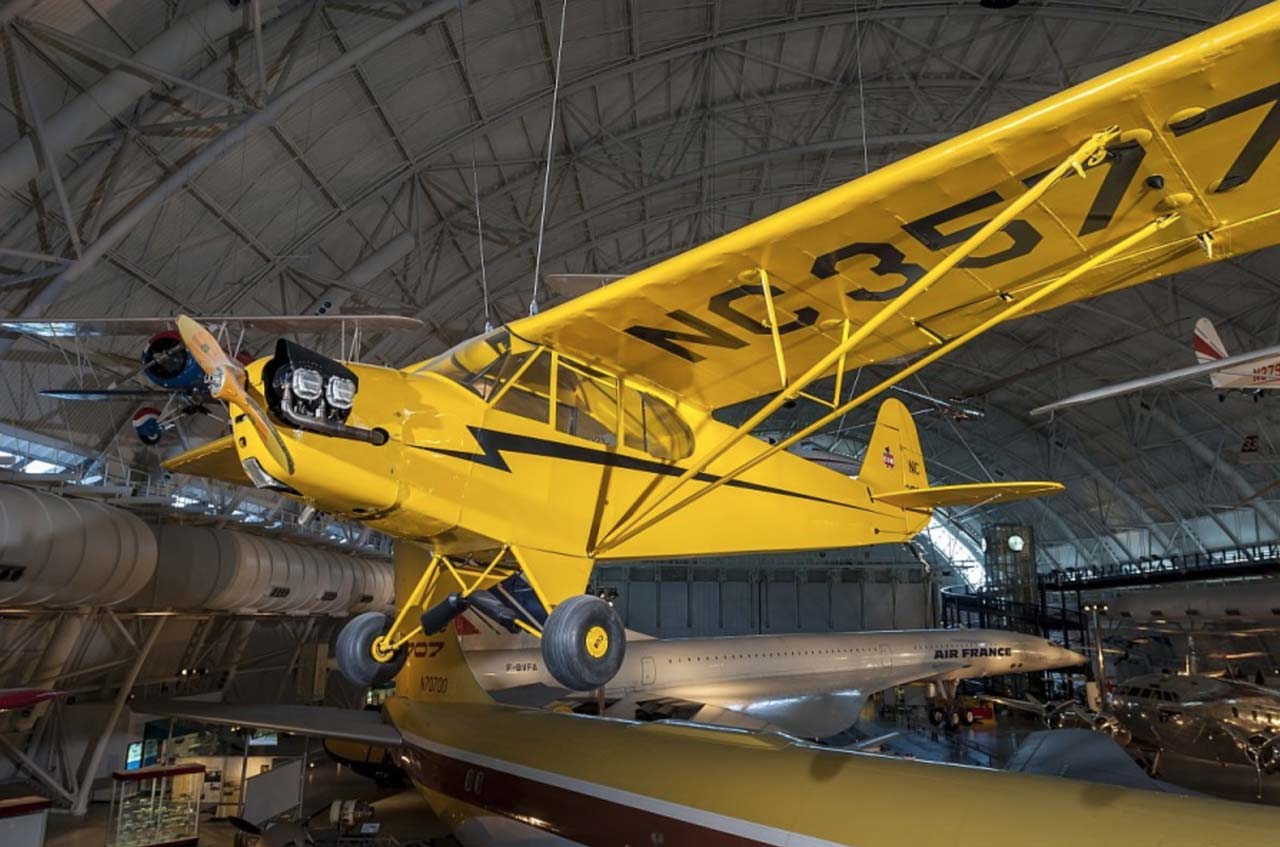
The Evolution of General Aviation Aircraft: What’s Changed Over the Years?
Piper J-3 Cub: distinctive yellow, high-wing light monoplane with tailwheel; trainer and sport aviation; Continental A-65, 65 hp engine. Photo courtesy of National Air and

Boundary Bay Airport was constructed in 1941 as part of the British Commonwealth Air Training Plan, one of the largest aviation training programs in history. The Royal Canadian Air Force used the site for pilot training during the Second World War, operating the No. 18 Elementary Flying Training School and later a bombing and gunnery school. Its triangular layout of three runways was typical of wartime training bases across Canada.
After the war, the airport’s role shifted. The Canadian military no longer required the site for pilot training, and it was repurposed during the Cold War as a signals intelligence station. By the 1970s, aviation activity at Boundary Bay had ceased, but the airfield was never fully erased. Its runways and buildings remained visible from the air, reminders of its earlier use.
Civilian operations returned in 1983 when Boundary Bay reopened as a public airport. Over the following decades, investment in infrastructure and growth in demand for flight training transformed the site into one of Canada’s busiest general aviation airports. The return to aviation brought new relevance to a facility that had once played a key role in Canada’s wartime training efforts.
Today, Boundary Bay Airport is defined by activity. In 2021, the airport recorded approximately 248,000 aircraft movements, more than Vancouver International Airport (YVR) during the same year. That figure placed it at the top of Canada’s list of busiest airports by movements, ahead of many major commercial hubs.
Much of this traffic is generated by flight training, but the numbers highlight how critical the airport has become to general aviation in British Columbia. Pilots logging circuits, practicing approaches, or departing on cross-country flights all add to the steady stream of movements that keep Boundary Bay near the top of national rankings.
Infrastructure supports this level of use. The main runway, 07/25, measures just over 6,000 feet, making it suitable for everything from single-engine trainers to larger multi-engine aircraft. The crosswind runway, 13/31, is 5,600 feet long and ensures that flying continues when winds shift, an important consideration on the BC coast. Upgrades in recent years have improved the airport’s lighting, navigation aids, and taxiway systems. Together, these features make Boundary Bay capable of handling high volumes of traffic consistently and safely.
The airport’s location south of Vancouver exposes pilots to a wide range of weather patterns. Summers are often marked by long periods of stable high pressure, creating clear conditions ideal for training and cross-country flights. In contrast, autumn and winter bring Pacific storms, frequent rain, low cloud ceilings, and fog. Winds can shift quickly, especially when systems move in from the Strait of Georgia.
For pilots, this variation is valuable. Operating at Boundary Bay means gaining experience in both calm and challenging conditions. Decision-making, weather assessment, and aircraft handling in less predictable scenarios are all part of flying here.
The geography surrounding the airport adds to its training value. To the north, the Coast Mountains provide opportunities for navigation and terrain awareness flights. Westward routes across the Gulf Islands and the Strait of Georgia expose pilots to over-water flying, where changing visibility and wind patterns must be managed carefully. To the east, Metro Vancouver presents the complexity of operating near controlled and congested airspace. Few airports combine coastal, mountain, and urban flying within such a short radius.
Boundary Bay Airport operates with a control tower and sits within Class D airspace. Its proximity to Vancouver International’s Class C zone gives pilots regular interaction with air traffic control. This exposure builds skills in structured communication and reinforces the importance of maintaining awareness in complex traffic environments. Unlike airports in uncontrolled airspace, where radio use may be limited, operations at Boundary Bay consistently involve coordination with controllers.
Boundary Bay is our home, and we take pride in being part of the community that makes this airport such a vibrant hub. Along with Pacific Flying Club, several other flight schools, charter companies, and maintenance providers operate here every day. Our students train in an environment where commercial operators and private aircraft owners also share the airfield, giving them a true picture of general aviation in the Lower Mainland. For us, Boundary Bay is more than just runways — it is a hub of aviation services and activity, and we are proud to contribute to its growth and energy.
Boundary Bay’s combination of history, infrastructure, geography, and activity has secured its place as one of Canada’s most essential airfields. From its origins as a wartime training base to its current role as a civilian hub, the airport has consistently contributed to the development of pilots and the growth of aviation.
Its aircraft movement figures regularly rival or exceed those of the largest airports in the country, underlining its role in supporting general aviation. Its runways and upgraded facilities ensure reliable operations, while its coastal weather and varied geography provide a training environment that cannot be replicated at quieter or more remote airfields. The controlled airspace and proximity to Vancouver International further prepare pilots for the realities of operating in complex environments.
Boundary Bay is a reminder that general aviation airports play a vital role in Canada’s aviation system. While it does not handle scheduled airline traffic, its contribution to pilot training, private flying, and local aviation services is substantial. The airport’s growth since its reopening in 1983 shows how a facility with military origins has adapted to meet modern needs.
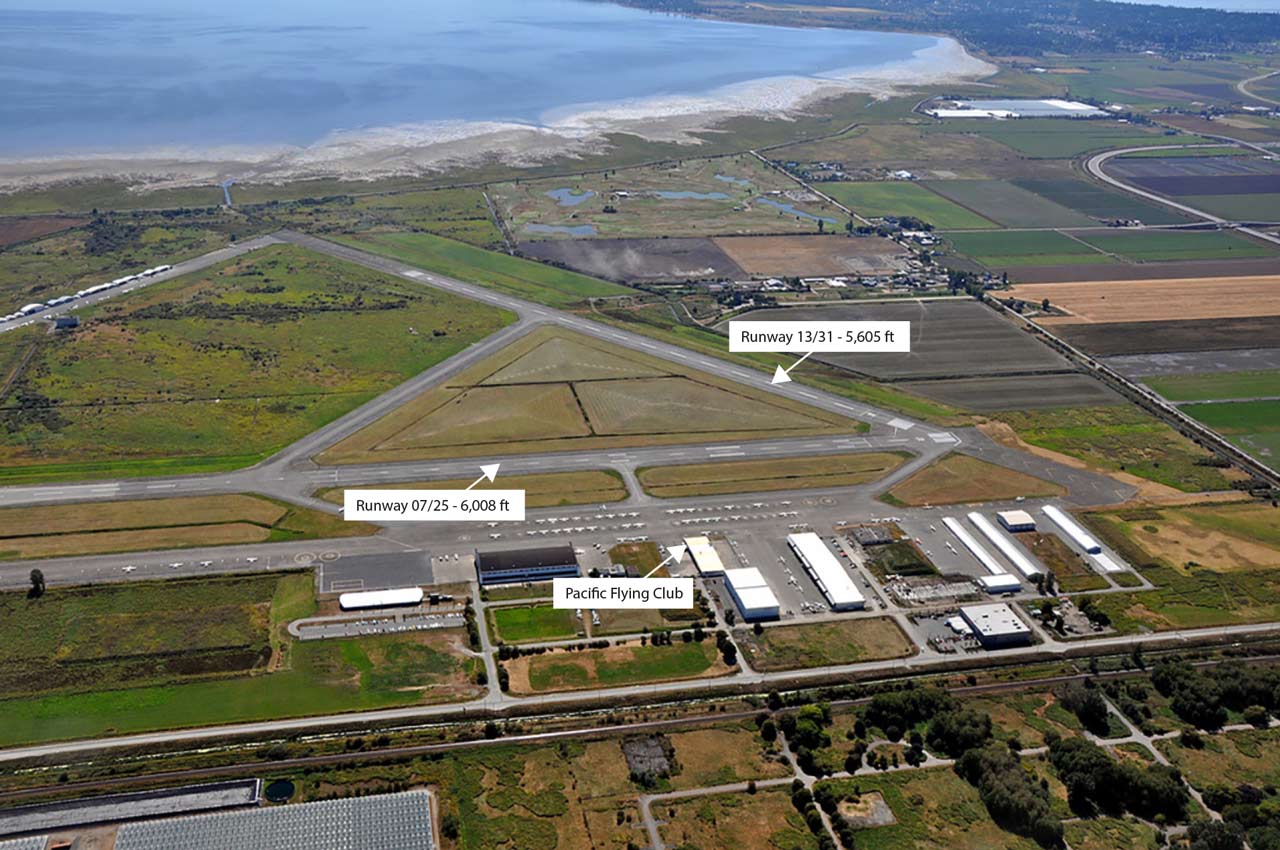
Runway numbers show their magnetic heading. At Boundary Bay, 07/25 runs east–west (073° and 253°). It is 6,015 feet long and 100 feet wide, with a 1,006-foot displaced threshold on the 25 end. The crosswind runway, 13/31, runs southeast–northwest (126° and 306°). It is 5,605 feet long and 100 feet wide, with a 656-foot displaced threshold on the 13 end. Each end is numbered for the direction a pilot is facing on takeoff or landing.

Climb aboard this unique experience; you can book a 30-minute Introductory Flying Lesson with one of our qualified Flight Instructors and discover what flying is all about! Click for more info!

Piper J-3 Cub: distinctive yellow, high-wing light monoplane with tailwheel; trainer and sport aviation; Continental A-65, 65 hp engine. Photo courtesy of National Air and
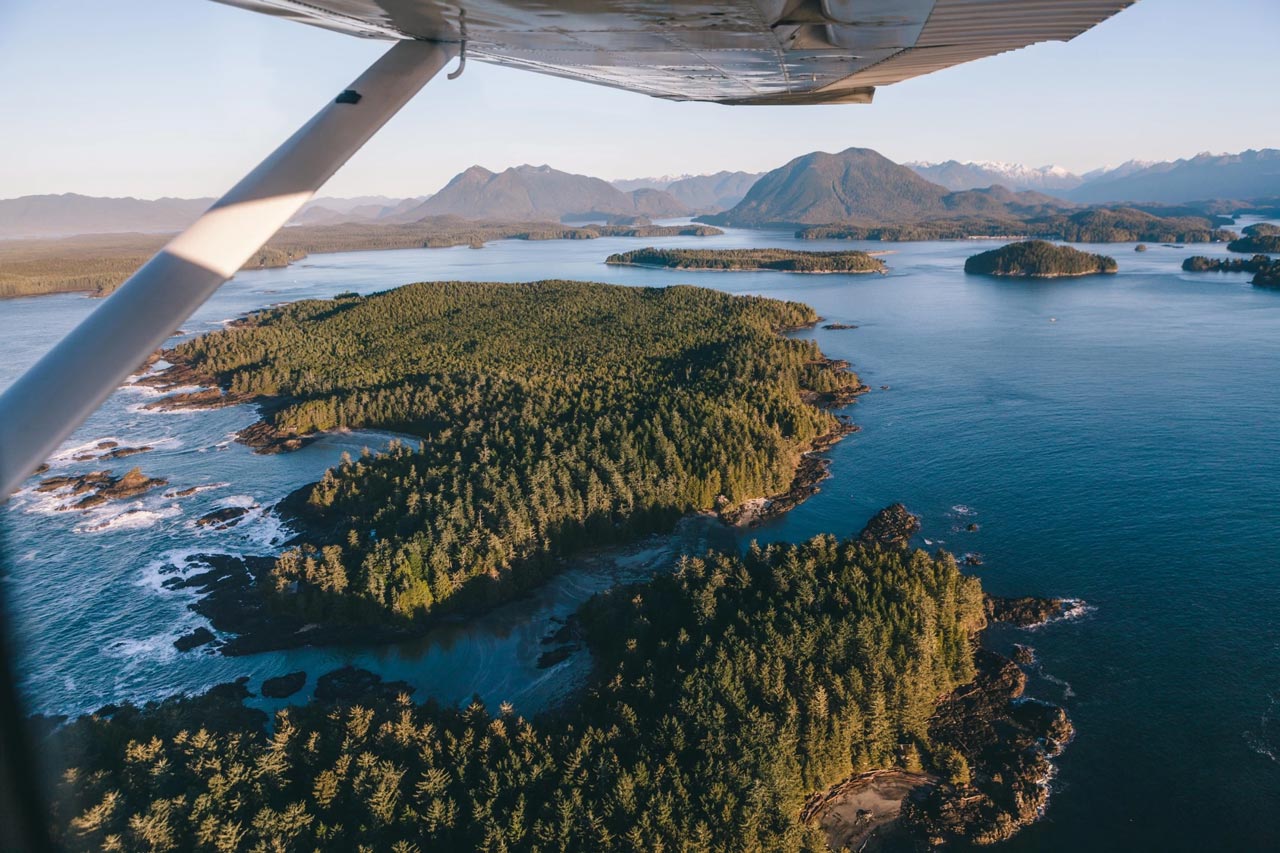
Photo of Clayoquot Sound by Jordan Giesbrecht courtesy of Tourism Tofino. Scenic Flights in North America offer more than just impressive views — they offer
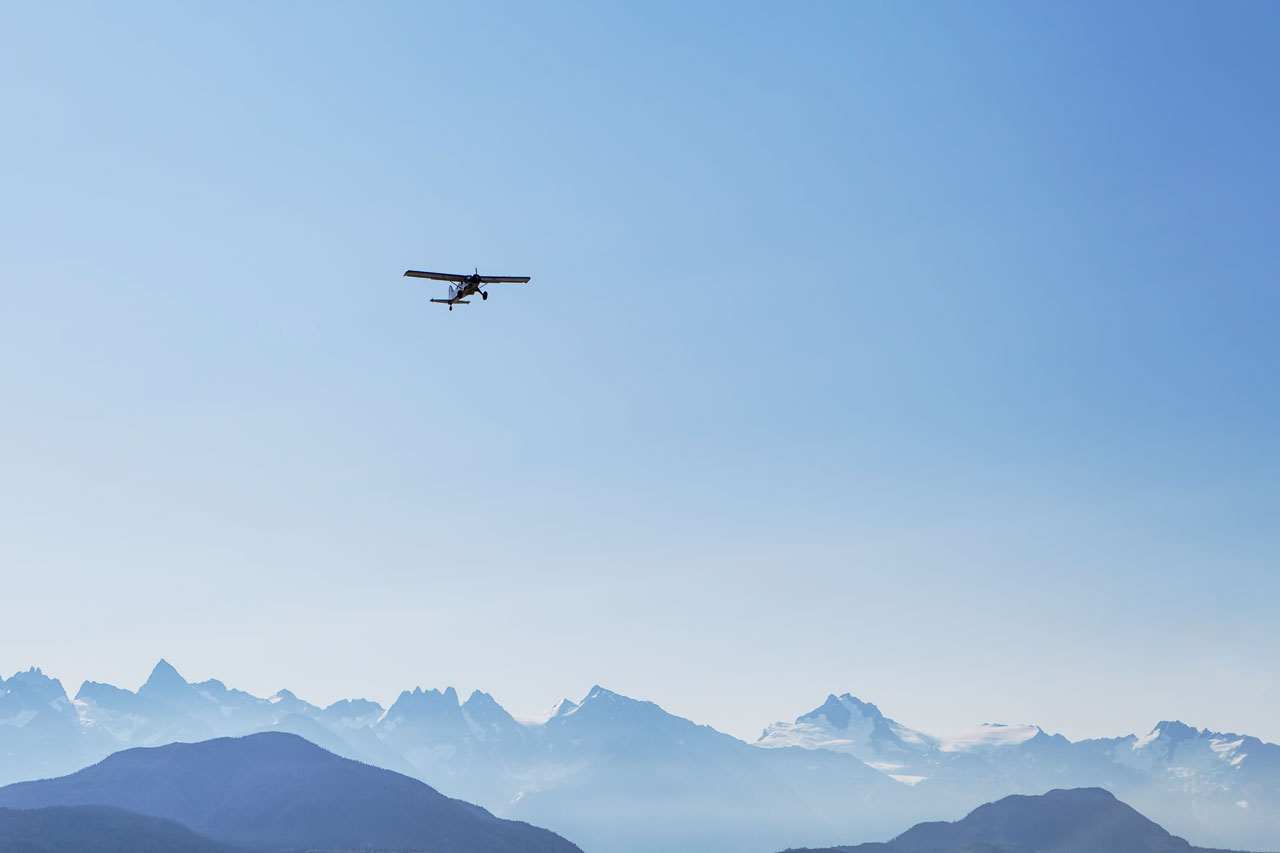
You lift off from a small airport, climb above the trees, and head toward the mountains. Below, rivers wind through thick forests, and narrow gravel
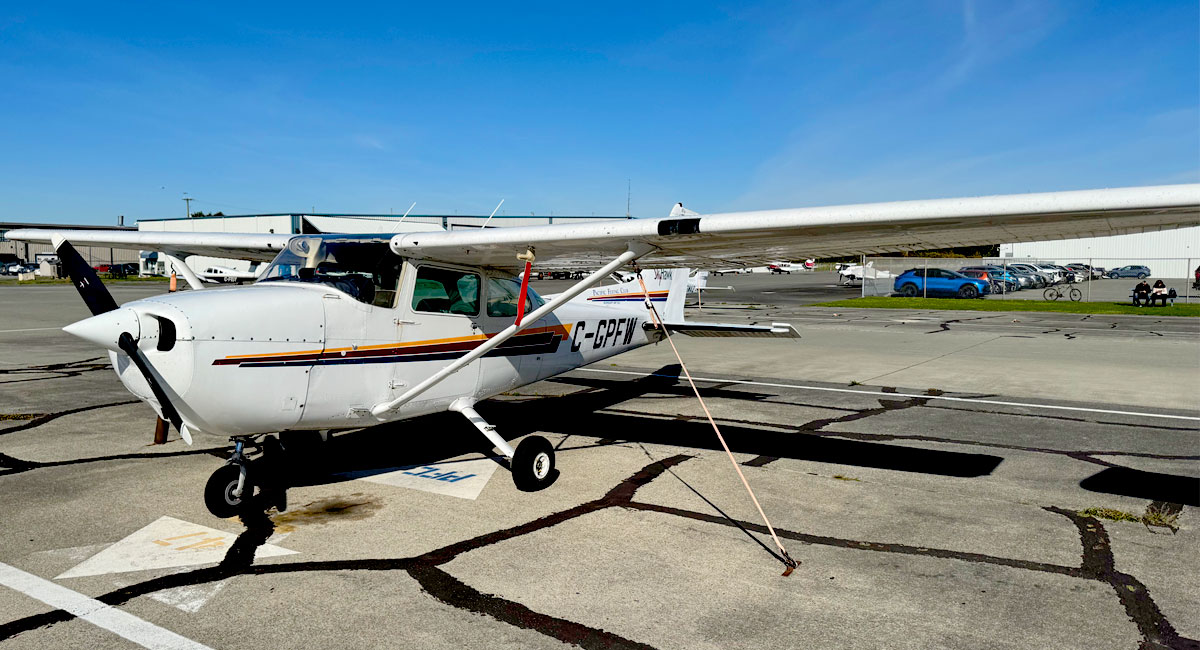

Historical Background Boundary Bay Airport was constructed in 1941 as part of the British Commonwealth Air Training Plan, one of the largest aviation training programs

Who Are Canadian Snowbirds? Officially known as the Canadian Forces Snowbirds (431 Air Demonstration Squadron), they’re more than just an air show attraction. The Snowbirds